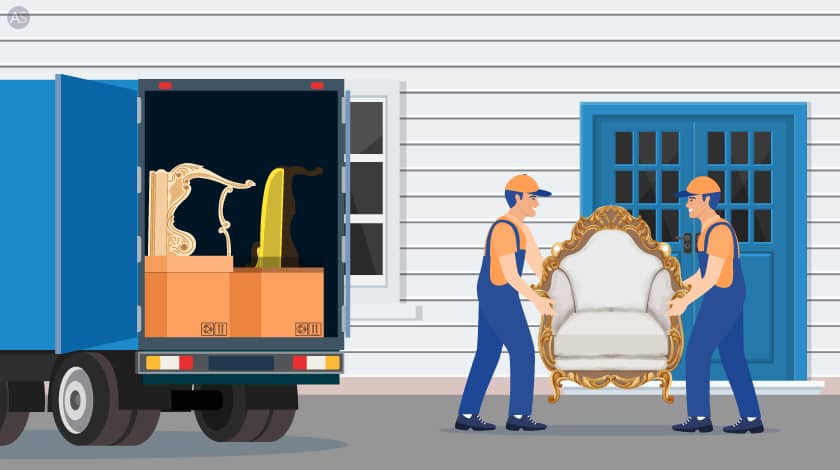8 Tips to Move Antique Furniture Easily and with Care

Antique furniture can be ancient, magnificent and possess some sentimental value to you. These can include old china cabinets, armoires, grandfather clocks, antique beds, tables, dressers, hutches, sideboards, chests of drawers, wardrobes, etc.
Moving these treasured belongings without causing any damage to them needs extra preparation. In this blog, we cover a few tips on what packing materials you need and how to pack these antique pieces and move them.
What are the Packing Materials Needed?
- Microfiber cloth
- Packing paper or packing peanuts
- Air-filled plastic wrap
- Glassine
- Bubble wrap
- Packing tape
- Corner protectors for art and mirrors
- Boxes for different sizes
- Moving blankets
- Furniture pads
Tips to Move Your Antique Furniture
#1 Inventory your Antique Furniture
Make an inventory list of the items, and remember to include the current condition of each antique (take photos if possible). This is for you to ensure everything arrives safely and to spot any damage during transit.
#2 Get your Antique Furniture Appraised
You can get your antique furniture appraised by personnel from antique furniture stores, auction houses or professional antique assessors. This can be beneficial to learn about the actual worth of your items and verification for making insurance claims if any damage occurs.
#3 Get your Goods Covered by Insurance
Get all your antique furniture under insurance cover before moving. You can either opt for homeowners insurance policies or take coverage from professional moving companies. The appraised document can be beneficial to calculate the value of your antique furniture.
#4 Clean Each Furniture Piece
Before starting to pack, clean up each of your antiques so that they arrive in the best condition in your new location. Use a clean microfiber cloth to remove any dust or debris accumulated on each item.
Note: It's better to avoid using chemical-based products, especially wood items, as these chemicals can dampen and damage your antiques when packed and stored in trucks.
#5 Disassemble Removable or Breakable Parts from Furniture
Disassemble any large antique furniture for safer packing and easier transit.
-
Remove any detachable elements such as drawers, doors, shelves, legs, glass panels, etc. and pack them separately with utmost care.
-
Wrap all glass items, like mirrors, glass panels, etc., in a glassine layer to protect them from being smudged or stained and secure it with packing tape.
-
Secure your furniture well by fixing any loose parts and locking doors. Use plastic wrap to hold all the furniture parts securely in place.
-
Wrap small hardware parts (screws, nuts, handles, etc.) in sealable plastic bags, label them, and pack them in the same box as the other furniture components.
#6 Packing Furniture with Pads and Foam
-
Securely wrap each furniture piece with moving blankets or furniture pads as initial protection.
-
After that, use air-filled plastic wrap to add some cushioning. Ensure to cover all sides of the furniture pieces, especially the top and the bottom. Secure with packing tape.
Note: Ensure you do not directly wrap the furniture pieces with plastic wrap, as the wood can be damaged because it can trap moisture.
#7 Secure Corners with Corner Protectors
Ensure all the corners of your furniture pieces are covered by corner protectors such as plastic, styrofoam, and cardboard.
Due to their protruding shape, corners can be more prone to nicks and scratches during moves, so it’s important to add an extra layer of protection.
#8 Lift, Don’t Drag
Do not drag packed antique furniture along the floor. Instead, lift the antique object with your hand underneath while at the same time striving to distribute the entire piece weight evenly among the people handling it at the moment.
This can save the furniture as well as prevent the floor from getting damaged by scratches, bumps and dents.
Conclusion
While moving your antique furniture, make sure you use quality packing materials, moving equipment and safe lifting techniques to move your cherished pieces around. Plan each and every action extra carefully. Take necessary caution to avoid slip-offs, impacts, or other accidents when taking your antique pieces out of your home and loading them on the moving vehicle.
You can ask the help of your friends or family to help you move these goods or hire a professional moving company, who can take care of the complete moving process from disassembly to proper packing and transporting to your new location on your behalf.